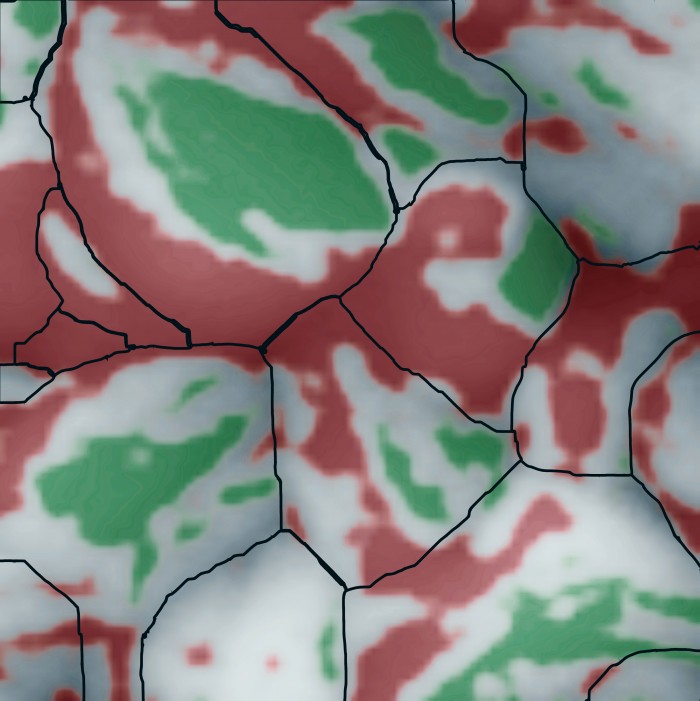A New Way of Looking at Solar Cells

A big step in helping perovskites reach their potential as the basis for far cheaper and more efficient types of solar cells came this week from a team at Lawrence Berkeley National Laboratory.
The scientists found that the surfaces of materials with this distinctive crystal structure vary dramatically in performance. Perovskites are made up of tiny grains that are faceted, not unlike diamonds, says Alexander Weber-Bargioni, one of the lead researchers, and some facets turn out to be much more efficient at producing electrical current than adjacent ones.
The result suggests that optimizing the favorable facets would allow far more efficient solar cells. Some of the facets studied by the Berkeley group can convert the energy in sunlight into electricity at a rate of close to 31 percent, which is the theoretical efficiency limit of perovskite cells. Perovskite solar cells under development today have efficiencies of around 20 percent, while mass-produced silicon solar cells have efficiencies of 17 to 20 percent.
The work was described in a paper published in the journal Nature Energy. It grew out of imaging work by David Ginger, a professor of chemistry at the University of Washington. If the orientation of the perovskite crystals can be carefully controlled, writes Ginger in an article accompanying the Nature Energy paper, “it may be possible to … help perovskites approach their ultimate theoretical performance limits.”
Now the challenge is to actually make perovskite cells with the desired facets all aligned in parallel to boost the overall efficiency of the device. “I think the ultimate question would be how to control the growth of the perovskite crystal,” says Yang Yang, a professor of materials science and engineering at UCLA. “That is not an easy task.”
Work on fabrication techniques is going on at several research institutes, including the lab of Henry Snaith at the University of Oxford and at the National Renewable Energy Laboratory in Golden, Colorado (see “Promising New Solar Material Boosts Performance of Silicon”). At least now, the scientists are not working in the dark.
“Until now we were proceeding by trial and error,” says Weber-Bargioni. “Now we know what to optimize for.”
Keep Reading
Most Popular
Large language models can do jaw-dropping things. But nobody knows exactly why.
And that's a problem. Figuring it out is one of the biggest scientific puzzles of our time and a crucial step towards controlling more powerful future models.
The problem with plug-in hybrids? Their drivers.
Plug-in hybrids are often sold as a transition to EVs, but new data from Europe shows we’re still underestimating the emissions they produce.
Google DeepMind’s new generative model makes Super Mario–like games from scratch
Genie learns how to control games by watching hours and hours of video. It could help train next-gen robots too.
How scientists traced a mysterious covid case back to six toilets
When wastewater surveillance turns into a hunt for a single infected individual, the ethics get tricky.
Stay connected
Get the latest updates from
MIT Technology Review
Discover special offers, top stories, upcoming events, and more.